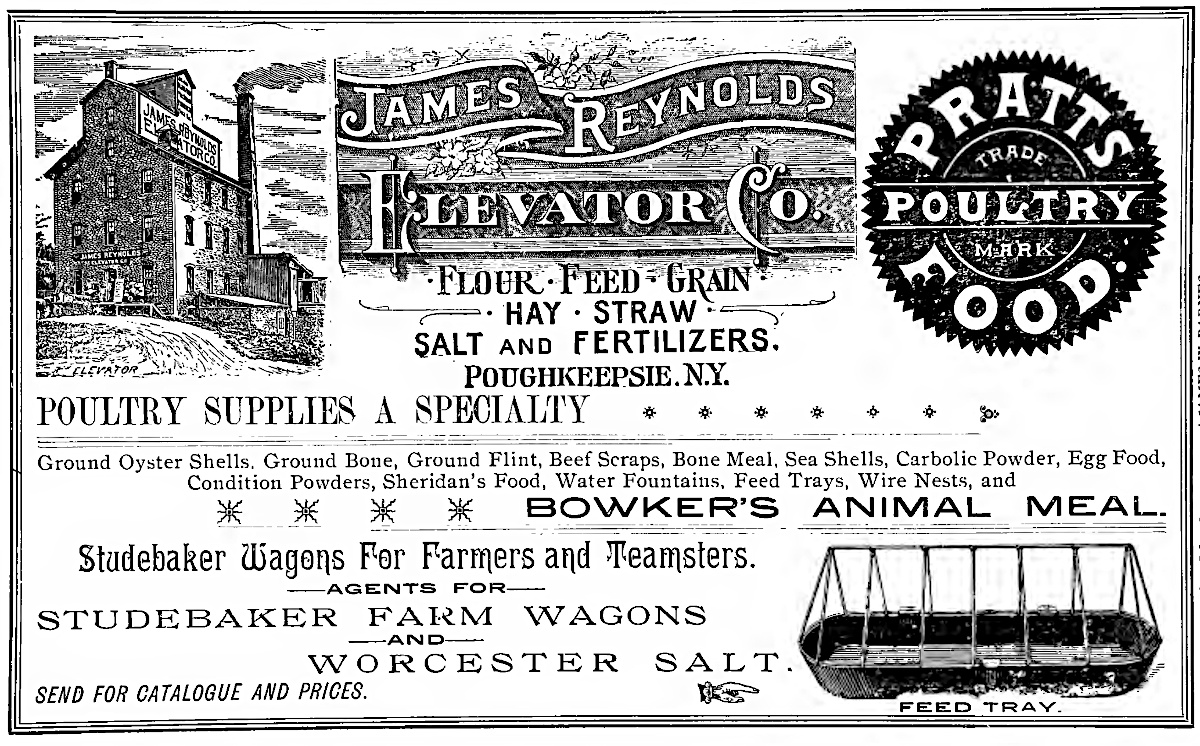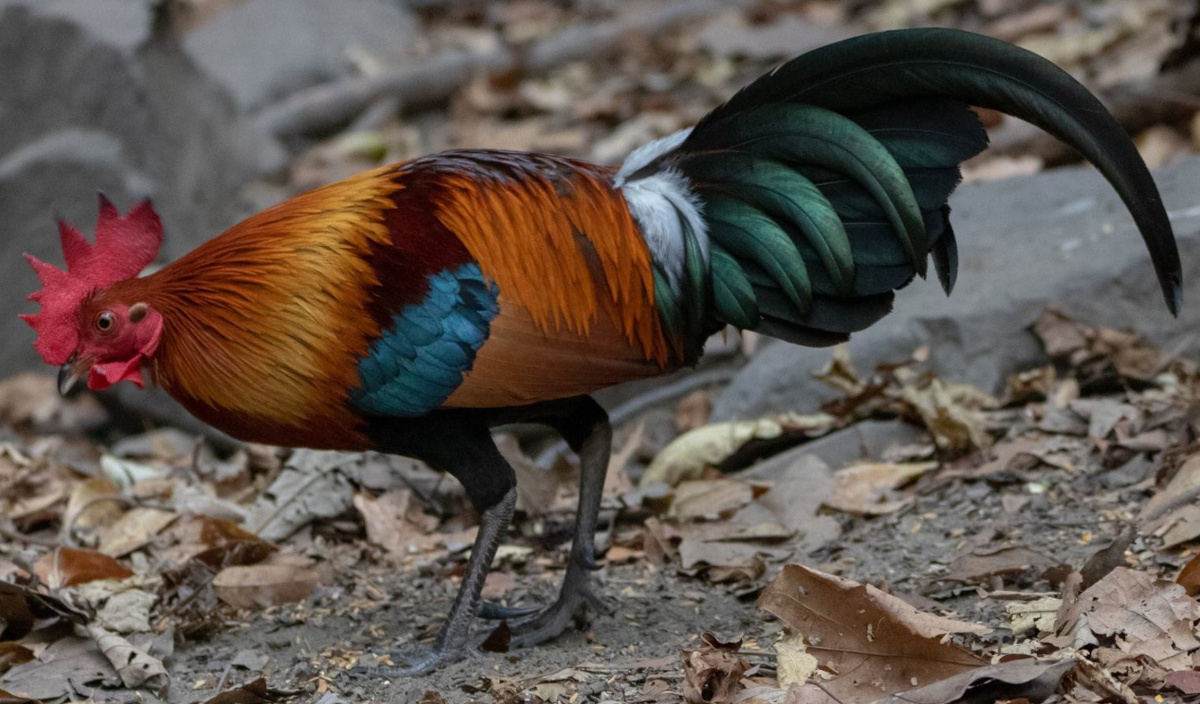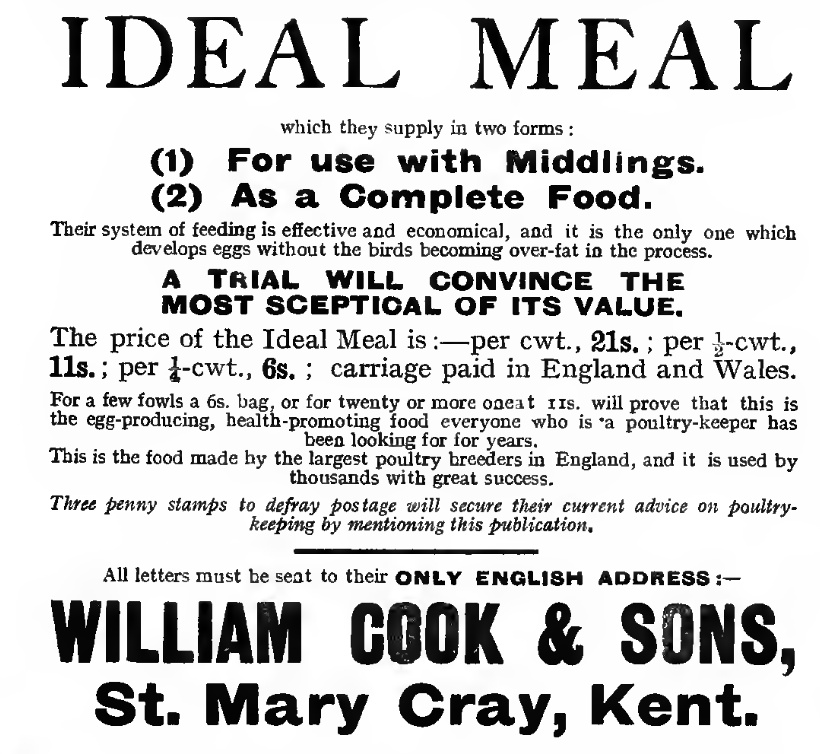The history of backyard chickens.

The domestic chicken as we know it today, Gallus gallus domesticus originated from Red Junglefowl, with genetic contributions from other Junglefowl species, all of which are still found wild throughout Southeast Asia.
When did humans first keep chickens?
Humans have been keeping domestic chickens since at least 5400 B.C. or 7400 years ago, although it is probably longer. The genetic variation found in modern chickens suggest that Junglefowl were domesticated in multiple, independent centres.
The chicken is one of 40 species of animal that has been domesticated by humans. The chicken has changed more in the last 75 years than it has at any other time.
Below: Image of what chickens looked like 1,000 years ago:

Over the course of 7400 years since their first domestication chickens were quickly traded across nearly every country the world in multiple overlapping waves culminating with their introduction to North America by the European in the 1500's.
Chickens have been kept for meat, eggs, feathers, sacred reasons and as combatants in cockfights.
Domestic poultry and waterfowl keeping has moved from a survival necessity to an increasingly popular hobby as time has moved on. Keeping poultry at scale was an expensive and time consuming business.
Below: The first ready mixed and specially prepared poultry feed was "Ideal Meal" and went on sale in 1869.

Before chicken feeds became readily available on the market, birds were kept in small numbers and mostly expected to fend for themselves.
We know there chickens biblical times as Jesus prophesied the betrayal by Peter: “Truly I tell you,” Jesus answered, “this very night, before the rooster crows, you will disown me three times.”. (Mt. 26:34) and then in Matthew 23:37 "O Jerusalem, Jerusalem, you who kill the prophets and stone those sent to you, how often I have longed to gather your children together, as a hen gathers her chicks under her wings, but you were not willing.
In some societies the chicken is sacred or has religious significance. Just about every religion and tribal culture contain references to chickens, Sacred chickens were kept in ancient Rome, Zoroastrianism (2000 B.C. to about 700 B.C), the oldest of the revealed world religions, held the rooster as a "symbol of light" and the devout kept a cock to ward off evil spirits.
Before hatching chickens artificially became a realistic proposition chicken and eggs were a scarce commodity.
The history of chickens timeline:
Poultry keeping as an industry barely existed before the 1860's and it was more common for people in the UK to keep a few ducks or geese. Annual consumption per person at the time was 100 eggs per year and around 1000 Million eggs per year were imported from European countries.
The process of chicken domestication through the breeding of indigenous wild chickens species has an approximately 8000 year-long history.
- The oldest chicken remains have been recovered from 12,000 year old settlements at Nanzhuang in Northern China but these were hunted and not domesticated.
- The earliest undisputed domestic chicken remains are bones associated with a date of approximately 5400 BC from the Chishan site, in the Hebei province of China.
- in the Indus Valley region of India Red Junglefowl were being hunted by humans as early as 7,000 years ago but no evidence of domesticated chickens older than 4,000 years has been found.
- Evidence and paintings of chickens has been found in Egyptian tombs dating as early as 2000 B.C.
- Domesticated chickens were first brought to Europe and what is now the United Kingdom in the Iron Age between 1200 B.C. and 600 B.C.
- Archaeological evidence suggests chickens were first transported around the Pacific by the Lapita peoples eastward migrations as early as 1000 B.C.
- Chickens are thought to have initially been transported to Iberia (Spain, Portugal, Andorra and Gibraltar) by Phoenician traders in 1000 B.C.
- Chickens and eggs were used as food throughout the Roman empire from 625 BC to its fall in AD 476.
- Aristotle, writing in the year 400 B.C. told of Egyptians incubating eggs in dung heaps and later in huge egg ovens.
- The Chinese artificially incubated eggs as early as 246 B.C.
- Chicken bones from several Spanish archaeological sites spanning both Muslim and Christian occupations date to a period after 450 B.C.
- European introductions of domestic chickens from Europe and Asia to the mainland of the Americas are well documented after A.D. 1500.
- Chickens were introduced to the Americas, Florida and the Caribbean in the 1500's and 1600's as a result of the Spanish, Dutch and Portuguese slave trade. These birds have the same genetic profile as chicken bones found in Iberian archaeological sites dating to between A.D. 1000 and 1500.
- In AD 1600, Ulisse Aldrovandi wrote the first known text focused exclusively on the history and varieties of domestic chicken.
- The alcohol-based thermometer proposed by the French naturalist and scientist René Antoine Ferchault de Réaumur in 1730 allows for accurate temperatures to be maintained.
- The first mechanical incubator was invented in 1749 by Reamur in Paris, France along with a book called "l’Art de faire éclore et d'élever en toute saison des oiseaux domestiques de toutes espèces, soit par le moyen de la chaleur du fumier, soit par le moyen de celle du feu ordinaire" or "The art of hatching and rearing domestic birds of all species in all seasons, either by means of the heat of manure or by means of ordinary fire".
- Beef scrap was the premium source of protein for poultry from the 1840's.
- The construction, use, and patent of artificial incubators in the United States dates from 1844.
- The mill roller was invented in 1866 allowing the bulk and speedy milling of grains.
- "Ideal Meal" , the first ready mixed and bagged poultry food went on sale in 1869.
- Lyman Byce created a coal lamp incubator in 1879.
- The first commercial incubator was made by Hearson in the year of 1881.
- In 1892, Ertel invented and patented a complete line of chicken incubators and brooders. His invention was the hot water incubator which used a kerosene lamp to heat a water reservoir and produced an even heat throughout the cabinet to incubate the eggs.
- The Utility Poultry Club was formed in 1897 and the first laying trials was held near Northallerton the following year.
- Special chick feed blends appeared in 1911.
- The National Institute of Poultry Husbandry was set up at Harper Adams College in 1920.
- In 1922 American entrepreneur Mr Ira Petersime started a small family business called The Petersime Incubator Company in Gettysburg, Ohio. He and his son Ray invent and produce the world's first electric incubator, the Petersime NO. 1 until 1949.
- A National Mark Scheme was devised in 1929 to facilitate the sale of fresh, clean and graded eggs.
- Pelleted feeds appear in the 1930's.
- In 1932, an onyx seal was found on a tomb dating back to the 7th century BC, featuring a fighting rooster and the inscription: “Belonging to Jaazaniah, servant of the King”.
- Lohmann and Hy-line hybrids appeared on the market for the first time in 1949.
- Cage units for chickens arrived in the early 1950's.
- First medicated poultry feeds appear in 1951.
- The broiler industry began 1954 after the end of rationing.
- The late 1960's saw the introduction of the first chicken vaccines.
- First organic chicken feeds appear in 1968.
- First feather sexable layers produced by Lohmann in the 1980's.
Chickens were only domesticated in Parts of South East Asia, they were then traded across the world.
